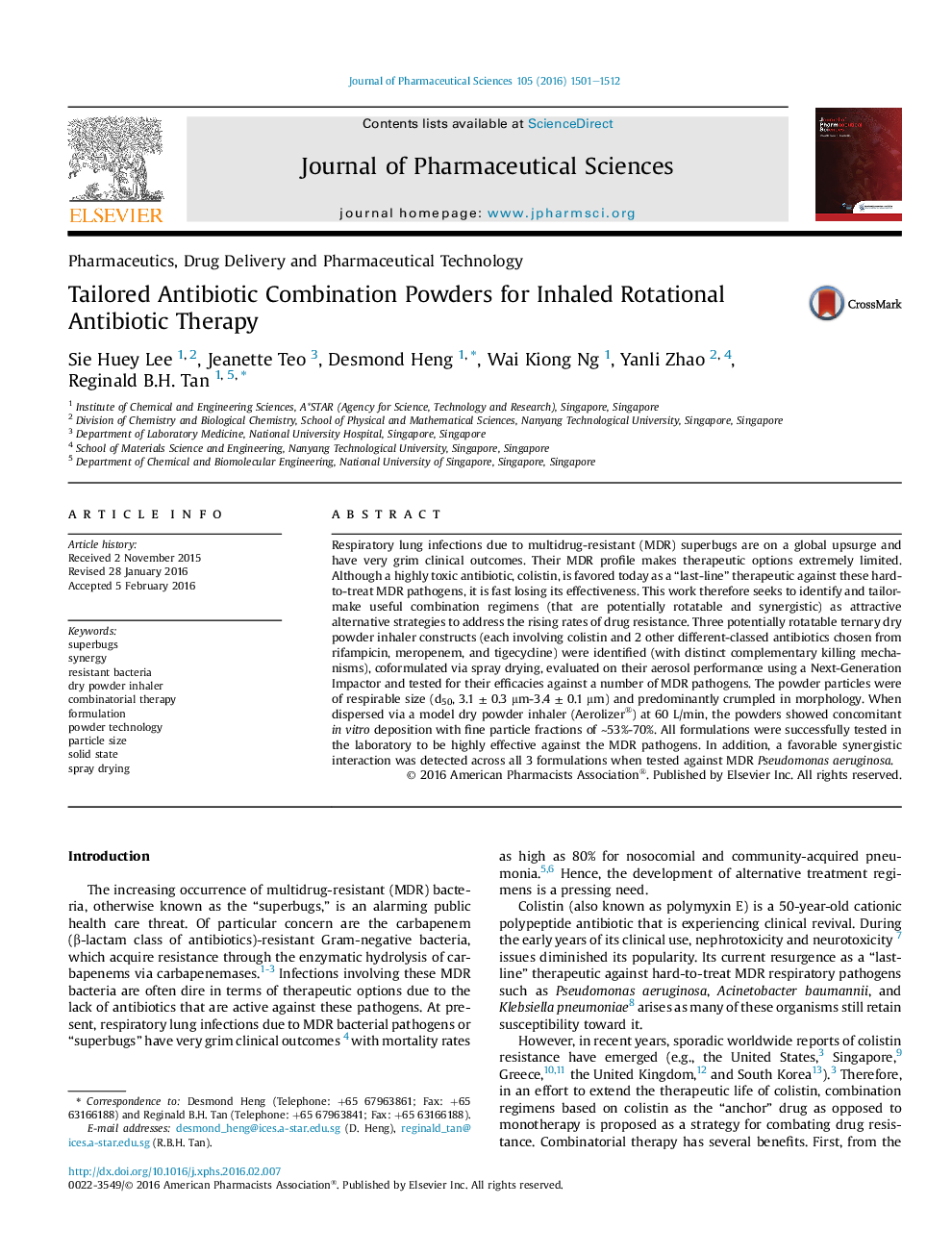| Article ID | Journal | Published Year | Pages | File Type |
|---|---|---|---|---|
| 2484496 | Journal of Pharmaceutical Sciences | 2016 | 12 Pages |
Abstract
Respiratory lung infections due to multidrug-resistant (MDR) superbugs are on a global upsurge and have very grim clinical outcomes. Their MDR profile makes therapeutic options extremely limited. Although a highly toxic antibiotic, colistin, is favored today as a “last-line” therapeutic against these hard-to-treat MDR pathogens, it is fast losing its effectiveness. This work therefore seeks to identify and tailor-make useful combination regimens (that are potentially rotatable and synergistic) as attractive alternative strategies to address the rising rates of drug resistance. Three potentially rotatable ternary dry powder inhaler constructs (each involving colistin and 2 other different-classed antibiotics chosen from rifampicin, meropenem, and tigecycline) were identified (with distinct complementary killing mechanisms), coformulated via spray drying, evaluated on their aerosol performance using a Next-Generation Impactor and tested for their efficacies against a number of MDR pathogens. The powder particles were of respirable size (d50, 3.1 ± 0.3 μm-3.4 ± 0.1 μm) and predominantly crumpled in morphology. When dispersed via a model dry powder inhaler (Aerolizer®) at 60 L/min, the powders showed concomitant in vitro deposition with fine particle fractions of â¼53%-70%. All formulations were successfully tested in the laboratory to be highly effective against the MDR pathogens. In addition, a favorable synergistic interaction was detected across all 3 formulations when tested against MDR Pseudomonas aeruginosa.
Keywords
Related Topics
Health Sciences
Pharmacology, Toxicology and Pharmaceutical Science
Drug Discovery
Authors
Sie Huey Lee, Jeanette Teo, Desmond Heng, Wai Kiong Ng, Yanli Zhao, Reginald B.H. Tan,
